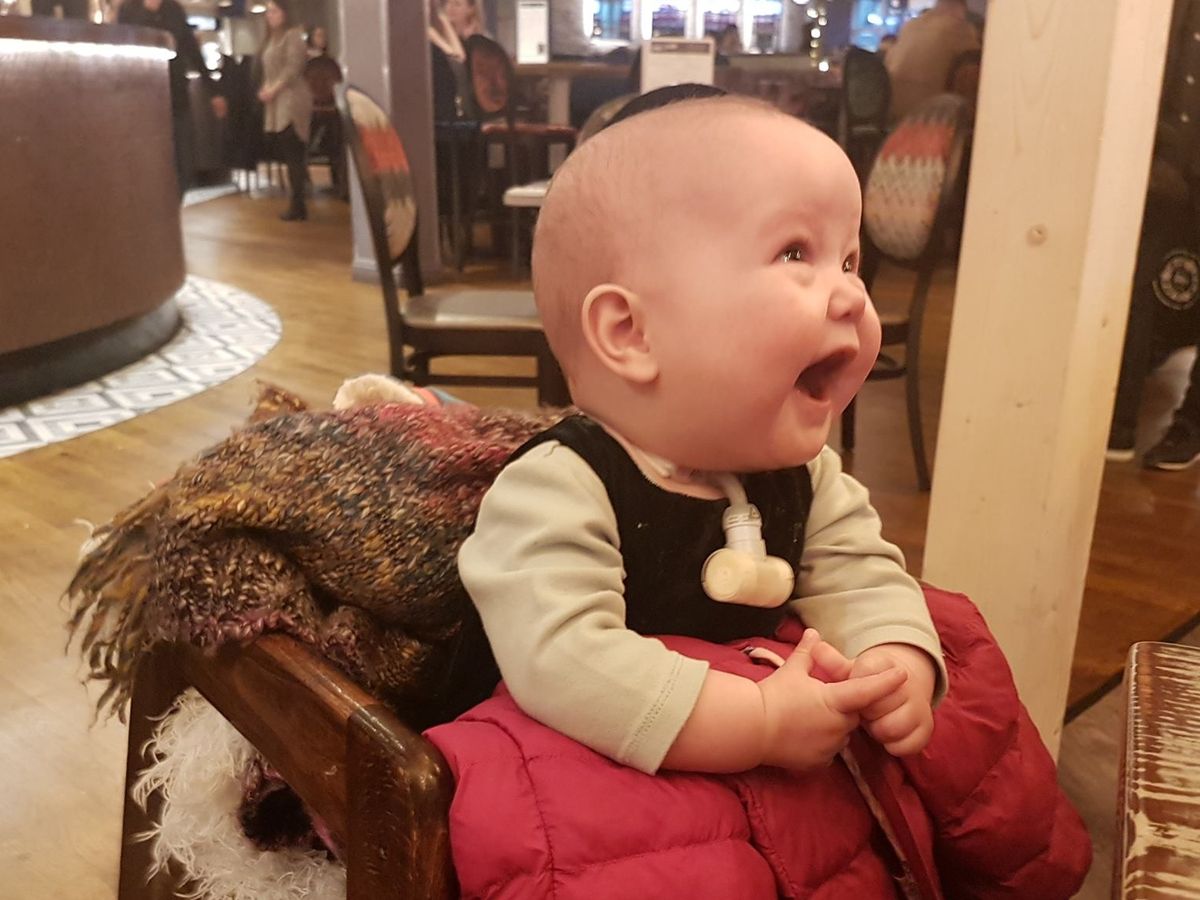
Donation protected
Hi there!
My name's Daniel and I'm making it my mission to raise $10,000 in 2 weeks so my 1st cousin can breathe independently (without a ventilator).
While $10k is but a small piece of the $300,000 procedure, it's just as important as the other $290,000 to make it all happen for Sadie.
Imagine the joy of cuddling your newborn daughter, asleep on your chest. Or that moment of quiet, during a long car journey, when the kids finally stop fighting and you look back to their sleeping faces. Or family movie and pizza night, cuddling on the sofa and falling asleep.
That is the worst nightmare for my cousin, Andrew and his wife, Sthar who fear every time their beautiful daughter falls asleep she might die.
Sadie is one of only approximately 1200 children worldwide, with a rare genetic condition called Congenital Central Hypoventilation Syndrome (CCHS).
Sadie doesn’t just stop breathing when she falls asleep. It can be if she is unconscious, tired, sick, concentrating or bored.
Her brain doesn’t recognise the stimulus to breathe - depleting oxygen and increasing carbon dioxide.
The part of the brain that controls automatic body functions is impaired. Meaning the brain “forgets” to breathe, or may “forget” to tell the heart to beat. Other issues may be digestion-related, circulatory or body temperature regulation to name a few.
Sadie is completely ventilator dependant when asleep. She has a tracheostomy (hole in the neck) and it attaches by tubing to a machine that breathes for her. She is completely electricity dependent as the machine only has 8hrs of battery life.
Despite this Sadie is fearless, courageous and brave. She is full of life and is fun and joyful. She lives life to the fullest. As long as no risks are taken with her breathing she has a normal life expectancy and attends mainstream school. She will have a job and hopefully a family of her own one day.
The riskiest time for children with CCHS is during infancy when they fall asleep regularly throughout the day and again in teenage years, with their first taste of independence at university, forgetting to connect to their ventilators after a fun night out with friends.
The Procedure
Great Ormond Street Hospital, with support from experts from Children’s Hospital Los Angeles will implant a battery-powered Diaphragm Pacing System to remove Sadie’s dependence on a mechanical ventilator.
The system will electrically stimulate her diaphragm muscles causing her diaphragm to contract so that air is pulled into her lungs. It consists of surgically implanted receivers and electrodes and an external transmitter with antennas worn directly over the implanted receivers.
Pulses are sent down the electrodes to the phrenic nerves, causing the diaphragms to contract. This contraction causes inhalation of air. When the pulses stop, the diaphragms relax and exhalation occurs.
Benefits Along The Way
Helping others with CCHS
Diaphragm Pacing is not available from the UK’s National Health Service as a treatment pathway for CCHS patients. By funding our own private case, we are helping CCHS UK (the registered charity that supports CCHS families) in their efforts to establish this treatment for children and adults with CCHS in the UK.
CCHS UK has created a working group within the NHS England to get this treatment pathway on the agenda. Sadie’s case, and others like hers, will provide evidence of how effective this treatment option is and contribute to surgeon training. Diaphragm Pacing will reduce costs for the NHS and will improve the quality of life for the patient, some of whom are dependent on a ventilator 24hrs a day, and their families.
We all want to do our part in the world but rarely know how. This is an opportunity for all of us to do exactly that!
Thanking you more than you'll ever know,
Daniel
Organizer
Daniel Pearce
Organizer
North Tivoli, QLD